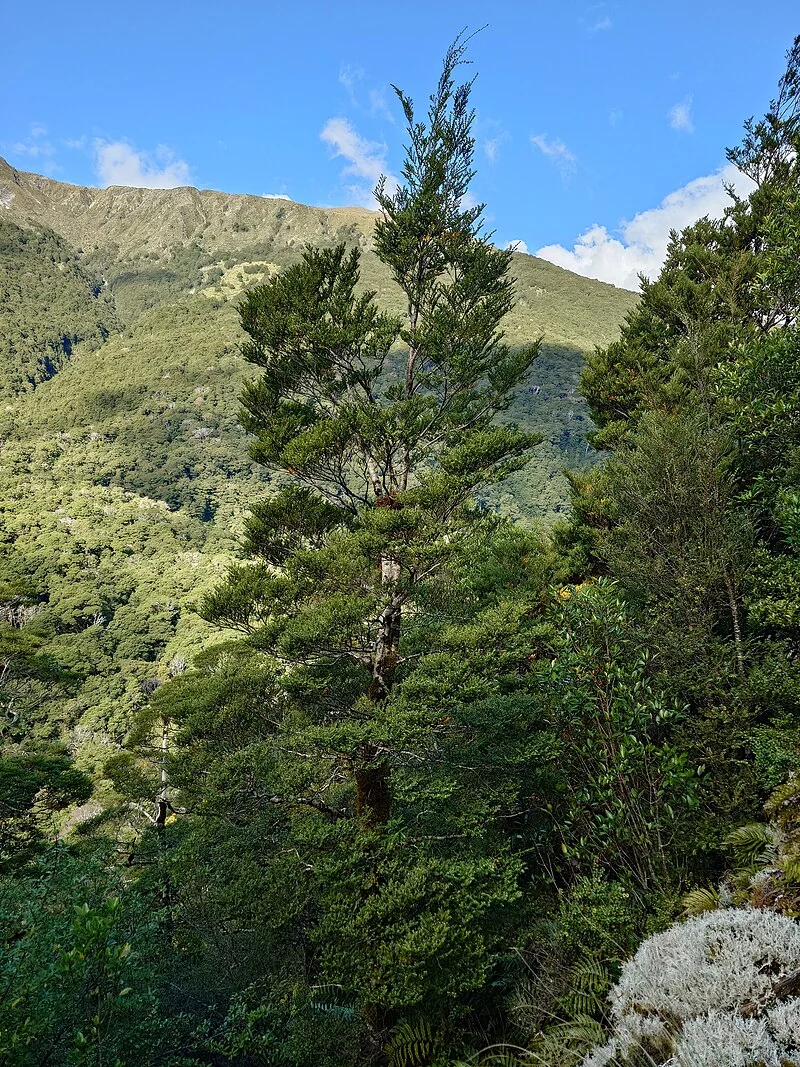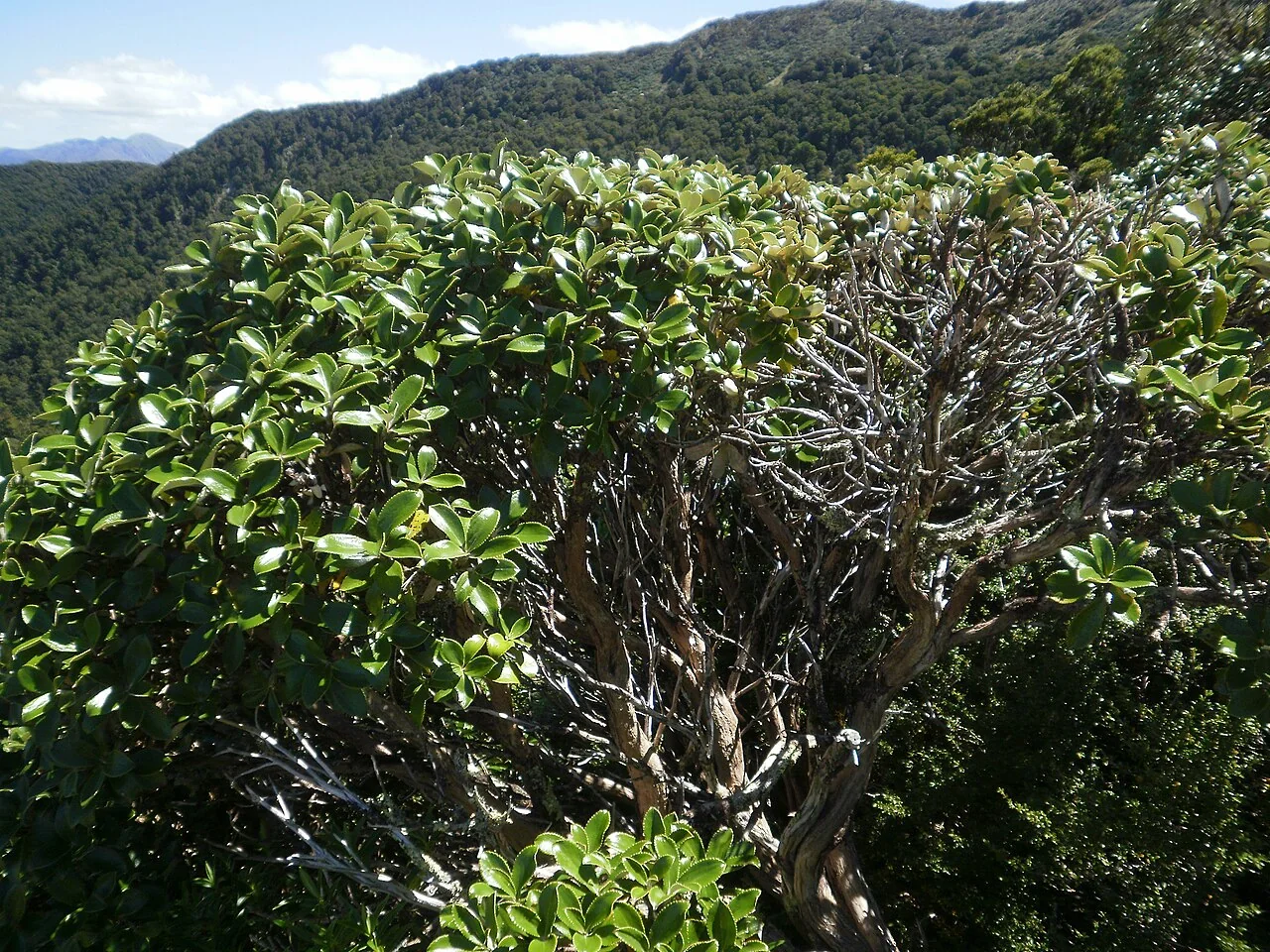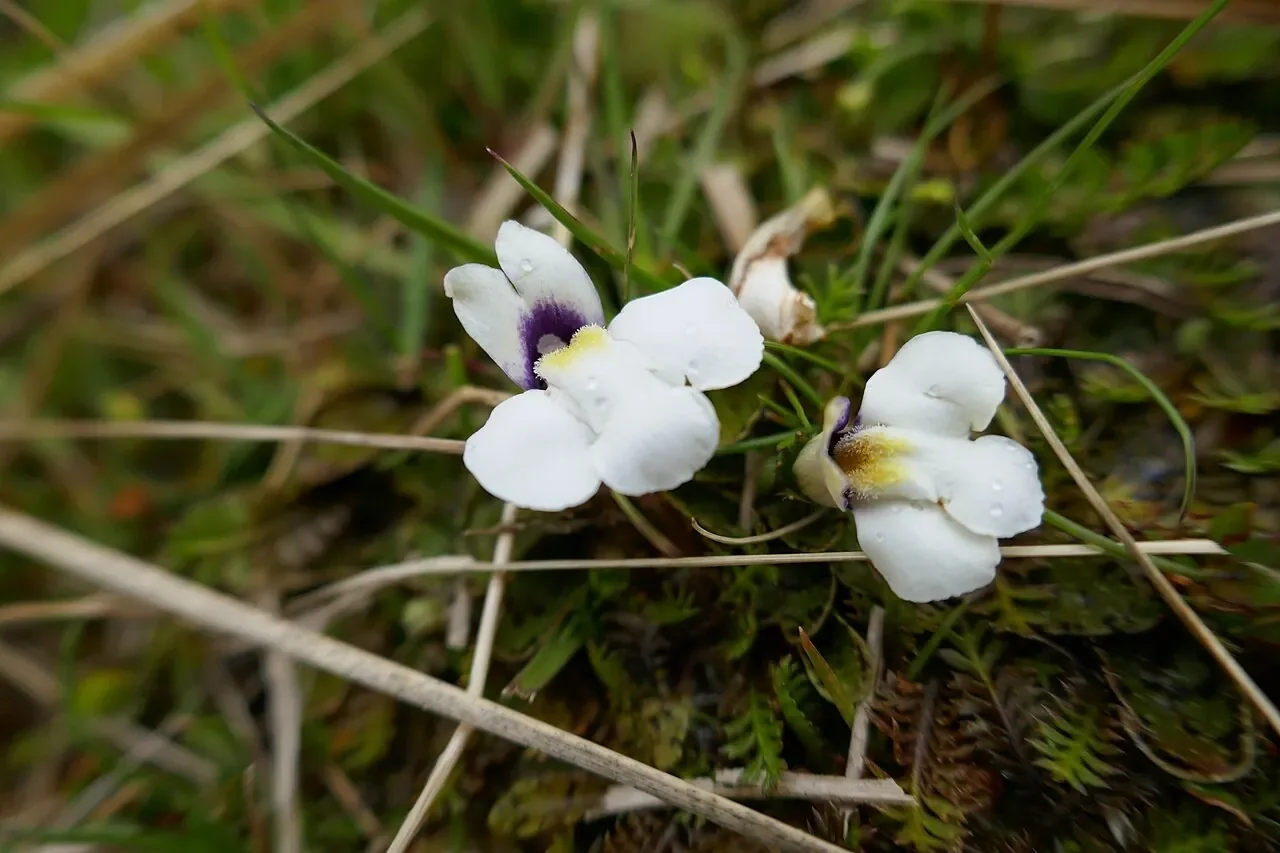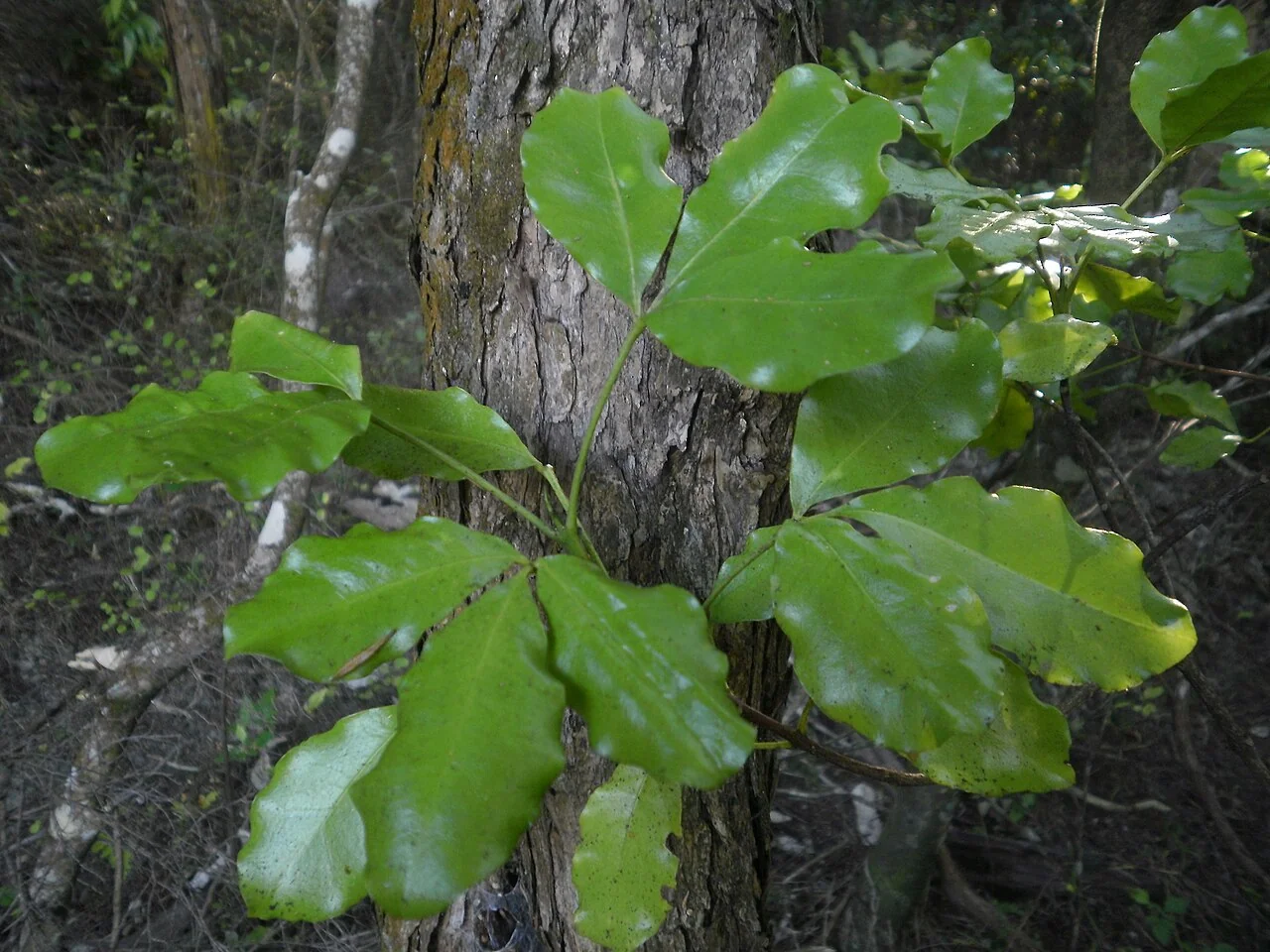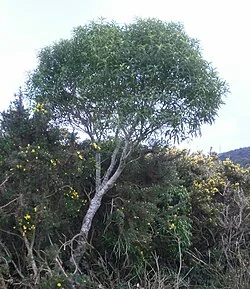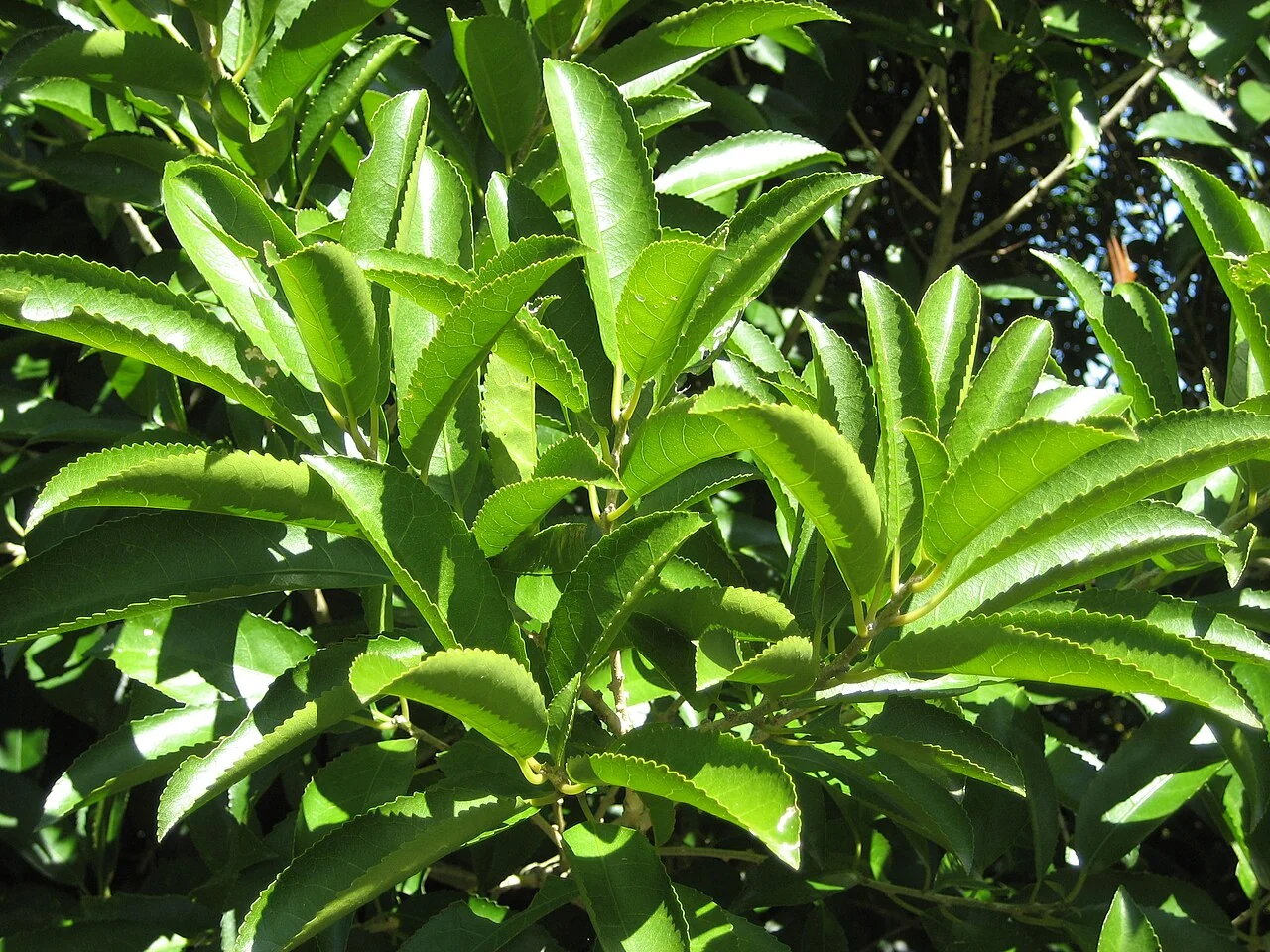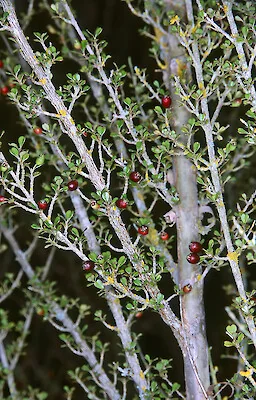
Rohutu
Lophomyrtus obcordata
This native plant, known as Rohutu (scientific name: Lophomyrtus obcordata), is a remarkable species endemic to New Zealand. It is characterized by its unique features, ecological role, and cultural significance. This comprehensive guide provides detailed information on its care, propagation, and importance within the New Zealand ecosystem. Understanding this plant contributes to the appreciation of our rich biodiversity and heritage. native trees

Plant Description
Botanical Features
Rohutu (Lophomyrtus obcordata) is a tall, bushy, broadleaf evergreen shrub or small tree endemic to New Zealand, reaching up to 5-6 meters in height. It has a smooth, beige trunk with flaking greyish bark and numerous, erect, and somewhat pubescent branchlets. Its most distinctive feature is its small (5-10 mm long and wide), thick, heart-shaped (obcordate) leaves, which are often notched at the tip. The leaves are typically dark green to grey-green on top and paler underneath. It produces white, solitary, axillary flowers, 6-8 mm in diameter, with numerous stamens, blooming in spring or early summer. These are followed by oval berries, 6-7 mm long, that range in color from bright red to dark red, and occasionally black or violet. It is typically found in lowland forests, thriving in rich, deep, loamy, and moist soils.
Quick Facts
| Scientific Name | Lophomyrtus obcordata |
|---|---|
| Height | 15-20 m |
| Spread | 3-5 m |
| Water Needs | Moderate |
| Light | Full sun to part shade |
| Frost Tolerance | Moderate |
| Salt Tolerance | Moderate |
| Growth Rate | Medium |
| Lifespan | Long |
Climate Best Suited to
Rohutu (Lophomyrtus obcordata) is primarily found in lowland to hilly forests across the North Island of New Zealand, extending to the Marlborough Sounds in the South Island. It demonstrates good adaptability to various conditions, thriving in areas with well-drained soils and tolerating both full sun and partial shade. Its natural distribution suggests a preference for warmer, more humid environments but with a reasonable tolerance for cooler temperatures found in its southern range.
Regional Suitability
| City | Climate Suitability |
|---|---|
| Whangārei | Ideal |
| Auckland | Ideal |
| Hamilton | Ideal |
| Tauranga | Ideal |
| Rotorua | Ideal |
| Gisborne | Ideal |
| New Plymouth | Ideal |
| Napier | Ideal |
| Whanganui | Ideal |
| Palmerston North | Ideal |
| Wellington | Ideal |
| Nelson | Ideal |
| Christchurch | Ideal |
| Dunedin | Moderate |
| Invercargill | Moderate |
Natural Habitat
Rohutu (Lophomyrtus obcordata) is endemic to New Zealand, primarily found in coastal and lowland forested habitats, particularly in the eastern North and South Islands. It can also be found in montane forests, though less frequently. This species is occasionally dominant in alluvial forest remnants and often grows in mixed podocarp forests. It prefers rich, deep, loamy, and moist soils, and can also be found on stable sand dunes within forests.
Plant Conservation
Lophomyrtus obcordata, also known by its Māori names r� hutu or tutuhi, is a flowering plant species endemic to New Zealand and is currently facing significant conservation challenges. In 2018, Lophomyrtus obcordata was officially listed as "Threatened" and "Nationally Critical" in New Zealand. It is also categorized as "At Risk - Declining." The most substantial threat to Lophomyrtus obcordata is myrtle rust (Austropuccinia psidii), a fungal disease that rapidly spreads and devastates species within the Myrtaceae family, to which Lophomyrtus obcordata belongs. The rust causes bright yellow spots and can lead to the decline and death of affected plants. It significantly impacts the plant's reproductive success, causing up to 90% of fruits to drop prematurely and potentially leading to functional extinction in certain regions. Other contributing factors to its vulnerability include habitat loss from urban development, agricultural expansion, and deforestation, as well as competition from invasive plant species. Conservation efforts involve relocation and protection in rust-free areas, ex-situ conservation methods like seed banking, and ongoing research and monitoring.
Growing Requirements
Soil Requirements
Rohutu (Lophomyrtus obcordata) is remarkably adaptable to different soil conditions, thriving in well-drained environments. It can tolerate a variety of soil types, from sandy to loamy, and prefers a neutral to slightly acidic pH. Good drainage is crucial to prevent root rot, ensuring healthy growth and development.
- Tolerates a wide range of soil types from clay to sandy
- Prefers well-draining soils but can handle occasional waterlogging
- Thrives in moderately fertile soils but will grow in poor soils too
- Can tolerate slightly acidic to slightly alkaline pH
- Handles coastal conditions including salt spray
Light Requirements
Rohutu (Lophomyrtus obcordata) thrives in a variety of light conditions, from full sun to partial shade. Optimal growth and flowering are typically achieved in locations receiving ample sunlight throughout the day. However, it can also tolerate some shade, especially in hotter climates, where it benefits from protection during the most intense afternoon sun.
- Full sun for optimal growth and form
- Can tolerate partial shade but may develop a leggier form
- At least 6 hours of direct sunlight daily is ideal
- Northern or eastern exposures work well in garden settings
Water Requirements
Once established, Rohutu (Lophomyrtus obcordata) is remarkably drought-tolerant, requiring minimal supplemental watering. During its establishment phase, consistent moisture is crucial to encourage strong root development. Mature plants can withstand dry periods, but regular watering during prolonged droughts will promote healthier growth and more abundant flowering.
- Moderate watering during establishment (first 1-2 years)
- Drought-tolerant once established
- Can handle periods of soil saturation
- Reduce watering in winter when growth slows
- Signs of overwatering include yellowing leaves and crown rot
Planting Guide
Rohutu is a charming and adaptable shrub that is well-suited to a variety of garden situations. Its small, heart-shaped leaves and attractive flowers and berries make it a delightful addition to a native planting scheme.
Site Selection
- Light: Rohutu will grow in full sun or partial shade.
- Soil: This plant prefers a moist, well-draining soil. It is adaptable to a range of soil types.
- Shelter: A sheltered position is preferable, especially in colder regions, to protect the plant from frost.
Planting Instructions
- Timing: Plant in autumn or spring.
- Planting: Dig a hole that is twice the width of the root ball. Gently place the plant in the hole, ensuring it is planted at the same depth as it was in its container. Backfill with soil and water in well.
Ongoing Care
- Watering: Water regularly during the first year of establishment. Once established, Rohutu is reasonably drought-tolerant.
- Pruning: Prune to shape as desired. Rohutu responds well to pruning and can be maintained as a compact shrub or hedge.
- Pests and Diseases: Like other members of the Myrtaceae family, Rohutu is susceptible to myrtle rust. Plant in a position with good air circulation and monitor for signs of the disease.
Ecological Role
R� hutu (Lophomyrtus obcordata) contributes dense, fine-scale structure to lowland and montane shrublands. As a myrtle, it provides nectar and fruit that link pollinators and birds across fragmented habitats.
Pollination and Dispersal
- Insect support: Flowering flushes supply nectar and pollen for a wide range of insects through spring and summer.
- Bird vectors: Small, fleshy fruits are dispersed by birds, promoting gene flow between forest remnants.
Habitat Functions
- Edge buffering: Tight branching reduces wind, protecting fern and seedling layers from desiccation.
- Litter and soil: Evergreen leaf drop feeds decomposer webs and improves soil organic matter and moisture retention.
Stressors and Resilience
- Site tolerance: Occupies cool gullies, forest margins, and montane slopes; aids continuity of understorey cover.
- Myrtle rust awareness: Potential susceptibility to Austropuccinia psidii means airflow and plant health are important for resilience.
Through steady floral and fruit resources and sheltering form, r� hutu enhances local biodiversity and ecological connectivity.
Uses and Significance
Garden Uses
- Specimen tree for visual impact
- Suitable for native gardens and restoration projects
- Enhances native garden aesthetics and biodiversity
- Provides architectural accent with its unique structure
- Effective for erosion control on slopes and banks
Landscaping Uses
Rohutu is a highly adaptable and attractive native shrub that offers a great deal to the home gardener. Its fine texture, interesting foliage, and compact growth habit make it a versatile plant for a range of landscaping applications.
Key Landscaping Applications:
- Hedging and Screening: Rohutu is an excellent choice for hedging. It has a dense, bushy growth habit and responds well to clipping, allowing it to be maintained as a formal or informal hedge. Its small leaves give it a neat, tidy appearance.
- Specimen Plant: The small, heart-shaped leaves and the reddish tinge to the new growth make Rohutu an attractive specimen plant. It can be pruned to shape and makes a lovely feature in a mixed border or as a standalone shrub.
- Native Plantings: As a native plant, Rohutu is a valuable addition to any native garden or restoration project. It provides food and habitat for native birds and insects.
- Container Gardening: Rohutu can be successfully grown in containers, making it a good choice for patios, balconies, and small gardens.
Like other members of the Myrtaceae family, Rohutu is susceptible to myrtle rust. To minimise the risk of infection, plant it in a position with good air circulation and avoid overhead watering.
Seasonal Care Calendar
Spring
In spring, Rohutu (Lophomyrtus obcordata) begins its active growth phase. New foliage emerges, and it's an ideal time for planting new specimens or propagating. Ensure adequate moisture and monitor for early signs of pests.
- New growth begins with fresh foliage development
- Apply a balanced, slow-release fertilizer if desired
- Excellent time for planting new specimens or dividing offsets
- Monitor for new pest activity and address promptly
Summer
Summer is the peak growing season for Rohutu (Lophomyrtus obcordata), often accompanied by flowering. Consistent watering is important, especially for young plants, to support vigorous growth and prevent stress during dry periods.
- Flowering typically occurs in early to mid-summer (November-January)
- Water young trees regularly during extended dry periods
- Avoid heavy pruning during the active growing season
Autumn
During autumn, Rohutu (Lophomyrtus obcordata) prepares for the cooler months. Fruits or berries develop, providing food for native birds. It's also a good time for planting and general garden cleanup.
- Fruits or berries develop and ripen (December-February), attracting birds
- Natural leaf shedding occurs as part of its growth cycle
- Good time for planting new specimens to establish before winter
- Clean up fallen leaves if a tidy appearance is desired
Winter
Winter is typically a dormant period for Rohutu (Lophomyrtus obcordata). Minimal care is required, though young plants may benefit from protection in colder regions. This is an opportune time for any necessary structural pruning.
- Generally dormant with minimal growth activity
- No special winter protection needed in most mild climates
- Suitable time for structural pruning if required
- Fallen leaves can be left as mulch or removed for tidiness
When to Prune and How Much
Rohutu (Lophomyrtus obcordata) generally requires minimal pruning to maintain its natural form and health. Pruning should focus on removing dead or damaged growth and shaping the plant as needed.
- Remove dead, damaged, or diseased branches at any time of year
- Light formative pruning when young helps establish good structure
- To create a multi-trunked specimen, cut the main stem to encourage branching
- Fallen leaves can be removed for a tidier appearance, or left as natural mulch
- If necessary, lower branches can be removed to create clearance underneath
- Major pruning is best done in late winter to early spring before new growth
Always use clean, sharp tools for pruning to minimize the risk of disease and ensure clean cuts. The plant often responds well to pruning with vigorous new growth, contributing to a fuller, healthier appearance.
How to Grow Rohutu
From Seed
Propagating Rohutu (Lophomyrtus obcordata) from seed is a rewarding process, though it requires patience. Start by collecting seeds from the ripe, dark berries in autumn. Clean the flesh from the seeds before sowing. Sow the seeds in a deep seed tray filled with a well-draining seed-raising mix. Cover them lightly with about 5mm of the mix or fine gravel. Water the tray gently and place it in a warm, sheltered spot with bright, indirect sunlight. Germination can be slow, taking several months. It is crucial to maintain consistent moisture levels without waterlogging the soil. Once the seedlings are large enough to handle, carefully prick them out into individual pots. Use a deep pot to accommodate the plant's developing taproot. Grow them on for a year or two before planting them in their final position.
From Cuttings
Rohutu can also be grown from semi-hardwood cuttings, which is a faster method than growing from seed and ensures the new plant is true to the parent. Take cuttings in late summer or early autumn from healthy, vigorous shoots of the current season's growth. Cuttings should be about 10-15cm long and taken from a node. Remove the leaves from the lower half of the cutting to reduce water loss and dip the base in a rooting hormone to encourage root development. Insert the cuttings into a container filled with a free-draining potting mix. Place the container in a warm, humid environment, like a propagator or under a clear plastic bag, to maintain high humidity. Keep the mix moist but not waterlogged. Roots should form within a few months. Once the cuttings have a well-developed root system, they can be potted on into larger containers and grown until they are robust enough to be planted out in the garden.
Planting
When planting your Rohutu, choose a site with well-drained soil and a sunny or partially shaded aspect. While it is adaptable to a range of conditions, it thrives in a cooler, moist root run. Before planting, prepare the site by digging a hole that is twice the width of the root ball and just as deep. Gently tease out the roots of the plant to encourage them to grow outwards into the surrounding soil. Place the plant in the hole, ensuring that it is at the same depth as it was in the pot. Backfill with soil and firm it down gently. Water the plant thoroughly after planting to settle the soil and eliminate any air pockets. It is important to keep the soil moist, especially during dry periods, until the plant is well-established. Applying a layer of organic mulch around the base of the plant will help to retain moisture, suppress weeds, and provide nutrients as it breaks down.
Pests and Diseases
Myrtle Family Health
Rohutu (Lophomyrtus obcordata) can be affected by myrtle rust in suitable climates, particularly on soft new growth. Good siting and hygiene greatly reduce risk.
- Myrtle rust: Monitor for yellow/orange pustules on young leaves and shoots; avoid pruning during flushes and dispose of infected debris safely.
- Scale: Treat with horticultural oils; improve light and airflow within the canopy.
- Leaf scorch: Protect from hot, drying winds; provide moisture-retentive but well-drained soils.
- Waterlogging: Causes root stress and dieback; plant on slight mounds in heavy soils.
Cultural Significance
Lophomyrtus obcordata, also known by its Māori names r� hutu or tutuhi, is a flowering plant endemic to New Zealand. While extensive cultural significance beyond its Māori names is not widely detailed, its endemic status and recognition within Māori language highlight its cultural importance.
Key Aspects of Its Cultural Significance Include:
- Endemic to New Zealand: It is found on both the North and South Islands, primarily in coastal and lowland forests, and occasionally in montane areas.
- Māori Names: It is commonly known as r� hutu or tutuhi, indicating its familiarity and presence in traditional Māori knowledge.
- Ecological and Horticultural Importance: It is an attractive and hardy shrub, easily propagated, and commonly used in New Zealand nurseries for ornamental or shelter plantings, and sometimes for revegetation projects. Its dense foliage and upright form make it suitable for hedging.
- Conservation Status: Lophomyrtus obcordata was given a conservation status of "Threatened - Nationally Critical" in 2018 due to threats like myrtle rust (Austropuccinia psidii), which has been recorded in some natural populations. Conservation efforts, including ex-situ conservation through seed banking, are being explored to preserve its genetic variability.
Bonus Tip
Rohutu (Lophomyrtus obcordata) fruits are relished by birds - if you-re restoring habitat, interplant with other myrtles to stagger nectar and fruit availability. In home gardens, a light, dappled canopy (morning sun, afternoon shade) intensifies leaf colour and reduces leaf scorch in hot summers.
